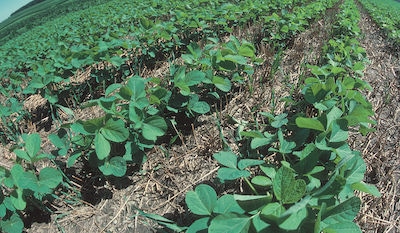
Collaboration at the Core
Since 2015, Field to Market: The Alliance for Sustainable Agriculture has spearheaded this annual convening of the U.S. food supply chain. This meeting is considered “the premier sustainability event for agriculture and by agriculture, convening the collective food and agriculture value chain to learn, develop and advance a shared vision.” As apparent by the participation from farmers and ranchers to commodity organizations, conservation organizations, academics, food companies and a few folks like me, this was the place to “share challenges and successes, and forge and strengthen cross-sector partnerships’ that will drive the desired sustainable future.” This is one summit where those who grow the food are part of the conversation, not the subject of a conversation.
Being “at the Table” — The Solution, Not the Problem
Over the past decade, discussions around sustainable food systems and what production methods or food sources may or may not constitute “sustainable food” have often been held without agriculture being at the table. During one of the opening sessions of the Sustainable Ag Summit, Lloyd Day, deputy director general of the Inter-American Institute for Cooperation on Agriculture asked, “How do you transform food systems without farmers”? Referencing the 2019 EAT Lancet report as an example of the absence of agriculture, Day emphasized that if sustainable food systems are to be viable, farmers need to be part of the discussion, science must serve as the foundation for decision-making, and agriculture should be viewed as part of the solution. This mindset reflects the maturity of the conference and more importantly, the growth and maturity of the food supply chain.
As Matt Sutton-Vermeulen, principal at The Context Network, mentioned, it’s clear that brands (food) are moving beyond aspirational pilot projects and instead focusing on creating synergies with partners that reflect their sustainability goals by measuring, reporting and verifying performance. During a panel discussion, the brand companies noted that multiple partners are necessary, stating that ag-centric organizations are essential to helping them work with farmers on data and carbon sequestration projects. The brand companies noted scope and scale of any project must be aligned with a “farm first approach” — securing farm partners that are committed to long term change.
Commitment to Change
Ryan Heiniger, director of America’s Conservation Ag Movement Trust in Food, summarized his key takeaways from the summit, including his observation that the commitment of farmers and ranchers to engage in sustainable ag practices has been obvious over his years of attendance. He also noted that “in the eyes of so many farmers and ranchers, sustainability is defined not only as paying today’s bills but also as providing the next generation with the option of coming back to the farm or ranch. Producers, through sweat and determination, are innovating and taking risks to do an even better job stewarding the natural resources they have the privilege of managing.” 1

Photo by Tim McCabe, USDA Natural Resources Conservation Service
Even though I don’t have a baseline to compare from other years, I agree that the farmer and rancher panels reflected a commitment to sustainable practices that went beyond “doing what always has been done.” Insights from ranchers, to poultry and pork producers, to almond growers, demonstrated that the “American Gothic” profile of farming exists only in the minds of some consumers and old paintings, as conversations of carbon offsets, preservation of ecosystems, water management strategies and data collection permeated discussions.
Sustainable food systems start with agricultural practices that are economically viable, preserve the environment and provides quality food for all. Reflecting on the dialogue heard at the summit, I’m confident that our food systems are moving in the right direction and our farmers and ranchers are committed to action. After all, our land and waterways “don’t lie” … actions speak louder than words.
Reference:
1. Ryan Heiniger, “Key Takeaways from the 2021 Sustainable Ag Summit,” November 29, 2021. Accessed November 30, 2021.

